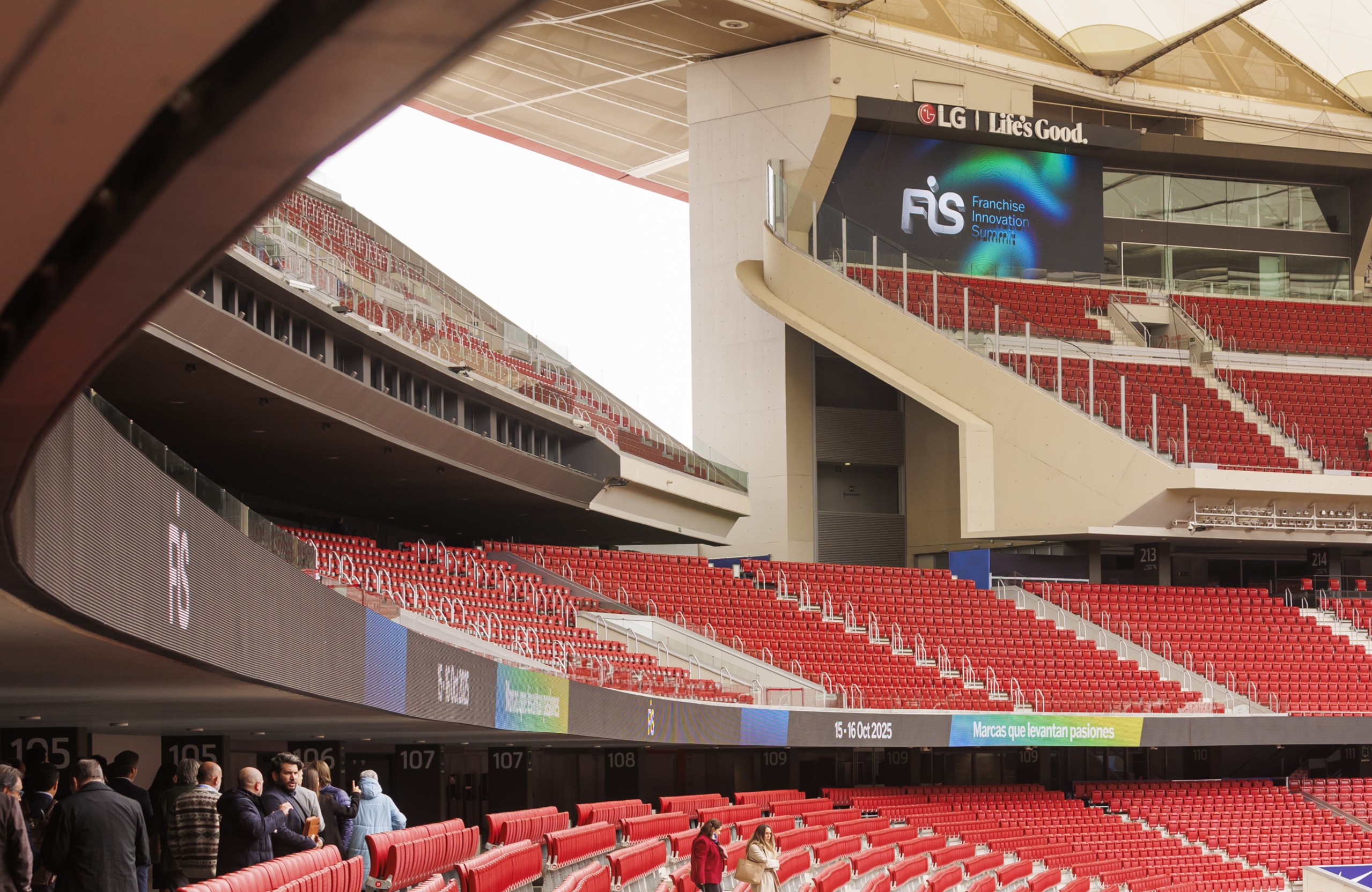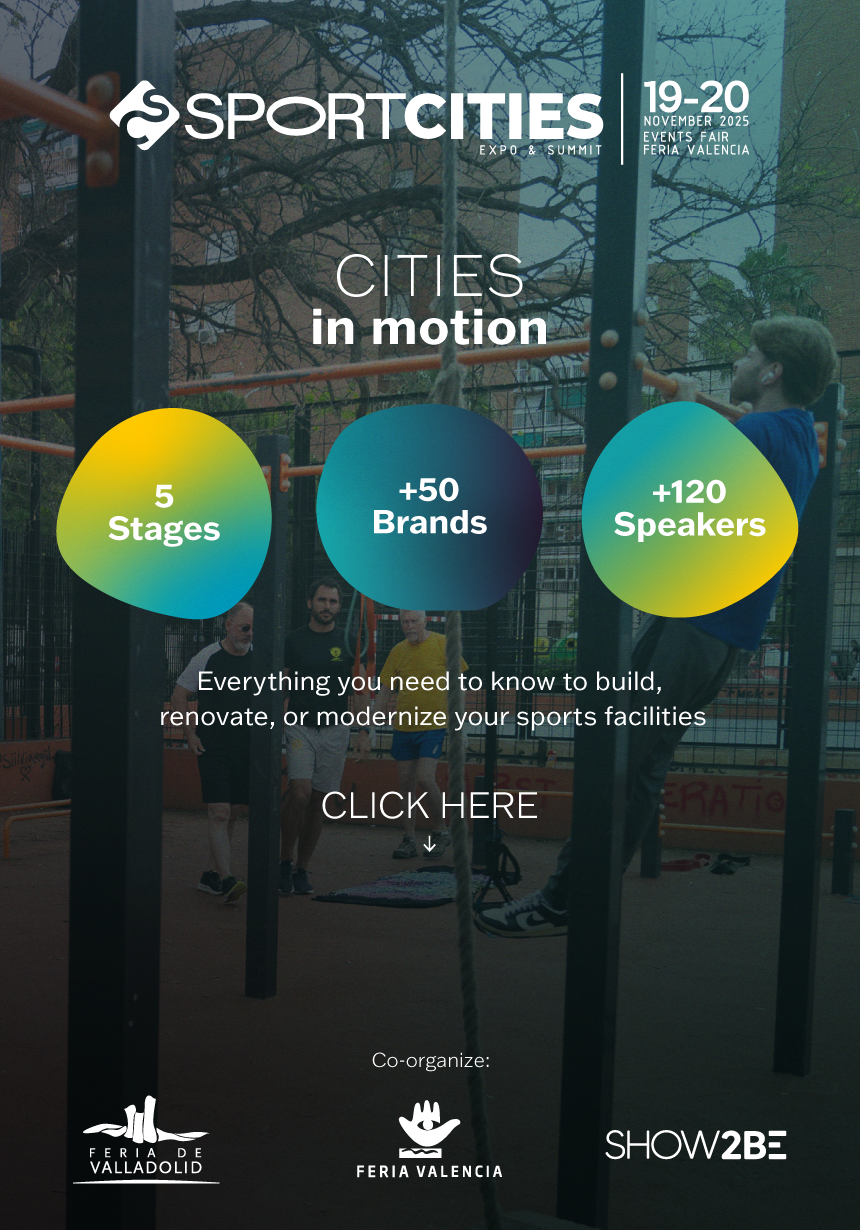Sports video scoreboards: real-time advertising, connected fans, and revenue diversification

Madrid, July 10, 2025
Video scoreboards and LED screens in stadiums and sports venues have evolved from simple scoreboards to powerful multimedia platforms capable of playing high-resolution video, dynamic graphics, personalized ads, and interactive content.
Today, they represent a key element in the commercial, advertising, and fan experience strategy within sports facilities, not only providing information on the competition in question, but also enabling the execution of personalized, real-time advertising and sponsorship campaigns, with brand activations ranging from games and contests to the integration of social media and club apps.
In this context, events such as SPORTCITIES Expo&Summit 2025 stand as key platforms for highlighting the most innovative manufacturers in the sector, promoting meetings between administrations, operators, sports service providers, and technology brands. Meetings like this not only promote the digitalization of sports, but also allow for an assessment of the real impact of solutions such as video scoreboards on the sports tourism ecosystem, sports health, and the efficient management of multifunctional venues.
In just two decades, video scoreboards have gone from being monochrome, manual, and severely limited in their advertising capacity to allowing the dissemination and automation of personalized content in real time, recording data for subsequent results measurement, and multiplying reach, which has provided a major boost to innovation in cutting-edge sports equipment.
But what have been the milestones that have marked the evolution of these devices from the 1980s to the present day?
- 1980s and 1990s: Monochrome video scoreboards, focused on basic data, with manual or mechanical control and high limitations for advertising insertion.
- 2000s to 2010s With the arrival of the 21st century, color LED screens were introduced, rotating digital advertising began to be implemented, and on-site audience measurement began to gain ground.
- From 2010 to 2020: High definition (HD) and widescreen formats were here to stay, and video scoreboards took a qualitative leap forward, entering the realm of non-sporting events, such as concerts and esports competitions, thus connecting with the growing demand for sports tourism.
- From 2020 onwards: the decade of advanced analytics with visual tracking, facial recognition, and occupancy sensors, as well as direct control from cloud-based platforms.
Artificial intelligence as a catalyst for change
Artificial intelligence has been—and will continue to be—the great catalyst that has led to the technological takeoff of these devices, providing a wide range of functionalities applicable to advertising, automation, data analysis, and audience interaction.
Technologies such as facial recognition, computer vision, and predictive analysis allow us to identify behavior patterns in the stadium and optimize which messages are shown, when, and to whom. Furthermore, AI also allows us to automate the generation of dynamic content (such as clips with highlights, statistics, or brand animations), reducing production times and improving personalization.
Together, these innovations have transformed the video scoreboard into an intelligent and interactive medium that generates measurable information, multiplying the opportunities for venue operators and sports service providers.
To understand the scope of this transformation, here are some examples that have already materialized in the market:
- Dynamic and personalized advertising: The use of systems that adjust ads based on audience profiles (age, gender, behavior) has become widespread, as has advertising adapted to the progress of the match (goals, substitutions, cards).
- Automation and intelligent production: Generative AI already makes it possible to create real-time content (such as automatic summaries and analysis graphs) and automate advertising planning (algorithms that maximize exposure based on sponsors and playing time).
- Advertising performance analysis: It's also possible to track how long and who views each ad using computer vision and integration with club CRMs to personalize campaigns.
- Fan interaction: Dynamics such as activation through facial recognition or personalized QR codes are already a reality, as are visual contests or surveys with real-time on-screen results.
Experts point out that future trends will include programmatic in-stadium advertising with greater and better integration of live social media and personalization by section of the stadium, thanks to technologies such as panels capable of segmenting messages by language or nationality. These innovations not only redefine the fan experience.
Video scoreboards "made in Spain"
We share some of the manufacturers in the Spanish market that are already leaders in the sports video scoreboard sector:
COSMI: Spanish manufacturer, based in Murcia, leader in LED solutions for sports scoreboards and digital signage with its own video scoreboard software: Visport Football and Visport Multideporte, with a large network of partners in Spain and Europe.
CUMA: Founded in 1986, also in Murcia, CUMA specializes in LED displays with a line of Apolo video scoreboards (sports series) and is present in medium-sized sports halls and football stadiums, with specific functions for cultural or sports health events.
GLOBAL LED VISION: A brand based in Barcelona, with technical support in Shenzhen (China). They offer factory-direct pricing, customized design, integrated logistics, installation, and final programming.





